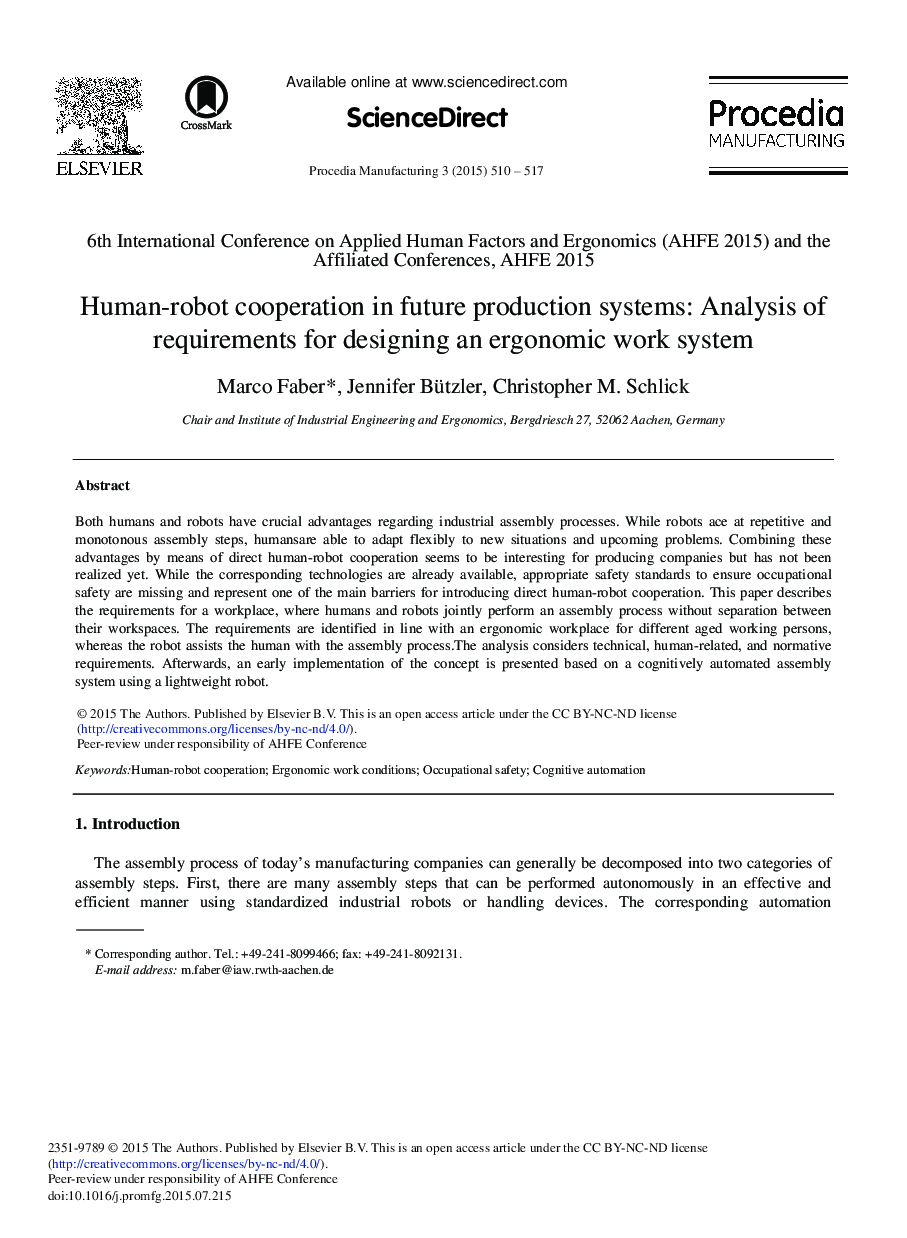| Article ID | Journal | Published Year | Pages | File Type |
|---|---|---|---|---|
| 1143829 | Procedia Manufacturing | 2015 | 8 Pages |
Both humans and robots have crucial advantages regarding industrial assembly processes. While robots ace at repetitive and monotonous assembly steps, humans are able to adapt flexibly to new situations and upcoming problems. Combining these advantages by means of direct human-robot cooperation seems to be interesting for producing companies but has not been realized yet. While the corresponding technologies are already available, appropriate safety standards to ensure occupational safety are missing and represent one of the main barriers for introducing direct human-robot cooperation. This paper describes the requirements for a workplace, where humans and robots jointly perform an assembly process without separation between their workspaces. The requirements are identified in line with an ergonomic workplace for different aged working persons, whereas the robot assists the human with the assembly process. The analysis considers technical, human-related, and normative requirements. Afterwards, an early implementation of the concept is presented based on a cognitively automated assembly system using a lightweight robot.
